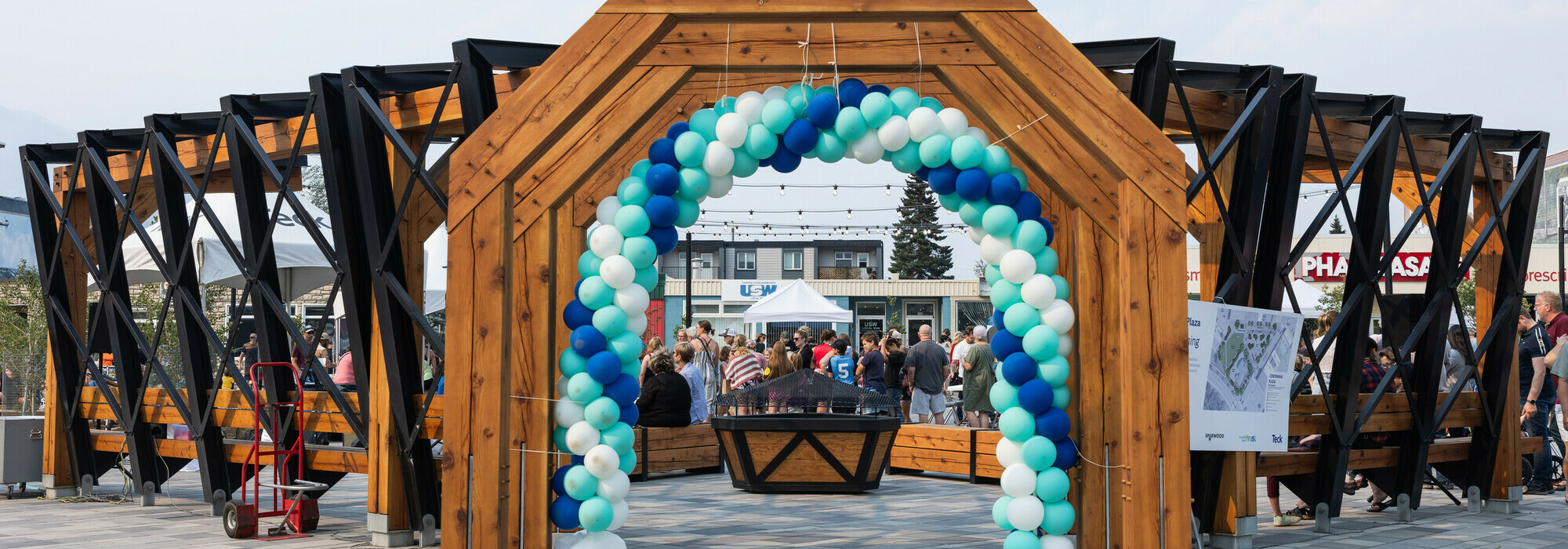District of Sparwood Projects
We have many projects underway within the District of Sparwood. Check back often to learn or get updates on some of the main projects happening in our community.

We have many projects underway within the District of Sparwood. Check back often to learn or get updates on some of the main projects happening in our community.

The District of Sparwood would like to advise residents that the municipality has contracted Speers Construction Inc. for the Lions Park Water Looping project. The project is expected to be completed by the end of summer. The hours of work will be 7:00 am to 6:00 pm daily.
This project will be undertaken in a phased approach. The work area highlighted in the map will not be impacted all at once, rather in stages as the construction progresses. During the project, the Spray Park and Spray Park Washrooms will be closed as water will be shut-off to these amenities. Specific dates will be communicated when available.
This work is weather dependent, and any updates will be provided. Residents are reminded to use caution and follow all signage when navigating through construction zones. Detour routes are expected to change through the various phases of work.
Questions can be direct to the District Sparwood Public Works Department
at 250.425.7760 or publicworks@sparwood.ca.

The District wastewater treatment plant was constructed in 1968 and operates with the following wastewater treatment processes:
The primary focus of these upgrades is secondary treatment and dewatering process. Secondary Treatment is the biological process that purifies the wastewater by using microorganisms to break down dissolved organic matter. This process significantly improves the quality of the effluent before it is discharged to the Elk River. The oxidation ditch and clarifier are the key components used for the District’s secondary treatment system.
The beginning of the secondary process allows wastewater to flow through a large oval-shaped basin called an oxidation ditch. While cycling through the ditch, matter is broken down by bacteria with the help of continuous aeration. This aerated wastewater then passes through a clarifier where settled solids, known as sludge, are separated from the treated water. A portion of this sludge is returned to the oxidation ditch for further decomposition. This maintains the health of the microbes for continual treatment. The mix of wastewater and activated sludge is called mixed liquor and is maintained under specific conditions and oxygen levels through dewatering and the use of mechanical aerators. (image of aerators)
The dewatering process is used to further separate solids from the water by running settled sludge through a large centrifuge. The separated water returns to the headworks of the system and cycles through the process.
Why is the District upgrading the secondary treatment and dewatering systems at the WWTP?
In 2008 Council initiated the research process to upgrade the WWTP. These decisions were based primarily on preparing for community expansion, for example include Cherrywood, Whiskey Jack and the Westwood developments), infrastructure upgrade requirements, and to meet the important obligations of human health and environmental conditions. The District began exploring the concept of a complete upgrade of the WWTP and considered the construction of a new plant at another location. The investment to build a new plant is considerably higher than upgrading at its current location. Based on other municipal projects in BC, a new plant at a different location would require an investment of between 80 and 120 million dollars versus upgrading the process at our current plant, which is estimated at approximately 15-20 million.
Main reasons to upgrade the wastewater treatment process:
The Dewatering component of the upgrade is a less significant addition but must still meet the demands of increased dewatering introduced by the proposed secondary treatment. The upgrade is necessary for both the upgraded treatment process and because the existing infrastructure is quickly approaching its end of useful life.
What options were considered?
The District sought engineering services to assess the feasibility of upgrading the oxidation ditch & clarifier and to compare alternative processes. There are viable alternate technologies that are safer and much less arduous to operate and maintain. The existing single oxidation ditch system is over a decade beyond its design life and has created safety hazards, high maintenance costs and contributes to further environmental risks. The rehabilitation of our current oxidation ditch will not provide future growth capacity or work towards long term regulatory compliance and is therefore not recommended as it is technically challenging, does not achieve project goals and does not represent good value for the District.
Upgrading the existing oxidation ditch with a more appropriate treatment technology was proposed. The two potential secondary processes that were explored included:
Aeration basins of any kind must have multiple units, with one unit capable of handling 75% capacity with the largest unit out of service. Currently the WWTP oxidation ditch only has one basin and one clarifier and therefore does not meet Municipal Wastewater Regulation requirements. The estimated cost to use two oxidation ditches and two clarifiers is double the cost of building a Sequencing Batch Reactors and the SBR’s require a much smaller footprint.
The sequencing batch reactor (SBR) is a fill-and draw activated sludge system for wastewater treatment. In this system, wastewater is added to a single “batch” reactor, treated to remove undesirable components, and then discharged. Equalization, aeration, and clarification can all be achieved using a single batch reactor. To optimize the performance of the system, two or more batch reactors are used in a predetermined sequence of operations.
(SBR’s) are the most economical choice for this scale of WWTP. They have a much smaller footprint, low maintenance requirements and are suitable for cold climates.
Based on the various considerations in upgrading the District WWTP, the most feasible and low-cost option is to upgrade our existing secondary treatment with SBR’s.
Alternate Approval Process for Loan Authorization Borrowing Bylaw
